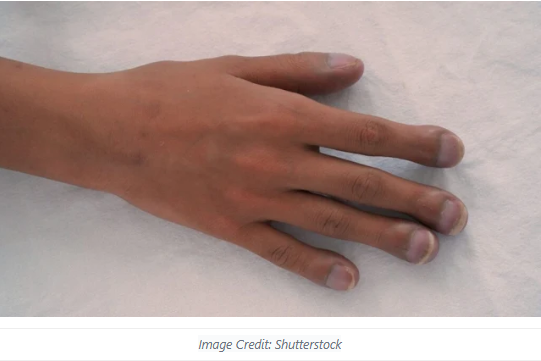What Your Fingernails Reveal About Your Health
Your fingernails aren’t just a cosmetic feature—they can serve as a window into your overall well-being. Changes in their color, texture, or shape can sometimes indicate underlying health conditions, from nutrient deficiencies to serious medical issues. While some changes may be harmless, others could signal the need for medical attention.
Brittle or Discolored Nails
Dr. Sara Norris, a naturopathic doctor based in Los Angeles, explains that many nail problems stem from poor nutrition or digestion rather than systemic illnesses. “The most common complaints I see are brittle, weak, or peeling nails, often tied to inadequate diets,” she says. However, persistent nail changes—especially if accompanied by symptoms like fatigue, weight loss, or swelling—should be evaluated by a healthcare provider.
Beau’s Lines

Beau’s lines are horizontal grooves or ridges across the nails, indicating a temporary halt in nail growth. These lines often follow significant stress to the body, such as high fever, severe illness, or chemotherapy. Dr. Bhavini Shah of Lloyds Pharmacy Online Doctor notes that some individuals developed Beau’s lines after recovering from COVID-19. In rare cases, they can progress to a full nail gap (onychomadesis). Though usually harmless, recurring Beau’s lines warrant medical evaluation to uncover the root cause.
Clubbing

Clubbing occurs when nails curve downward, and fingertips become swollen—a potential sign of serious conditions like heart or lung disease. Dr. Shah also mentions that red or purple streaks under the nails could indicate heart-related issues. Other warning signs of heart disease include chest pain, fatigue, and ankle swelling. If you notice these changes, seek medical attention promptly.
Spoon Nails

Nails that curve inward, resembling spoons (koilonychia), may point to iron-deficiency anemia. Dr. Shah explains that this condition is common after pregnancy and is often accompanied by symptoms like fatigue, pale skin, or headaches. Causes include poor nutrition, digestive disorders, or conditions like celiac disease. Treatment typically involves dietary changes or iron supplements, though blood tests may be necessary to confirm the diagnosis.
Pitting or Dents

Small pits or dents in the nails are often linked to skin conditions such as psoriasis, eczema, or alopecia areata (a type of hair loss). These disorders usually present additional symptoms like scaly skin or hair loss. A dermatologist can diagnose the underlying issue, with treatments ranging from corticosteroids to vitamin D3, along with addressing the primary condition.
Melanoma

A dark streak or line on a fingernail or toenail may signal melanoma, a form of skin cancer that can affect nails. If you notice an unexplained dark mark, consult a dermatologist immediately, as early detection is critical for successful treatment.
Terry’s Nails

Terry’s nails, characterized by a white nail bed with a pink or red band at the tip, may indicate conditions like liver disease, heart disease, or diabetes. It can also occur naturally with aging. If accompanied by symptoms such as jaundice, fatigue, or loss of appetite, it’s important to see a doctor.
Yellow Nails

Yellowing nails often result from fungal infections, which can cause the nails to become thickened and brittle. In some cases, yellow nails may point to more serious issues like diabetes, thyroid disease, or lung problems.
When to Seek Help
While many nail changes are benign, persistent or severe abnormalities—especially when paired with other symptoms—should be evaluated by a healthcare professional. Monitoring your nails can provide valuable insights into your health and help detect potential problems early.
By paying close attention to your nails, you can gain a better understanding of your body’s signals and take proactive steps to maintain your overall health.
